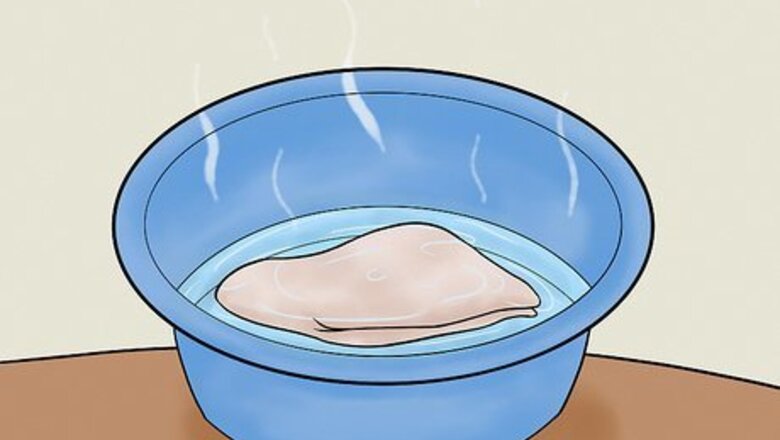
views
Exfoliating Your Face
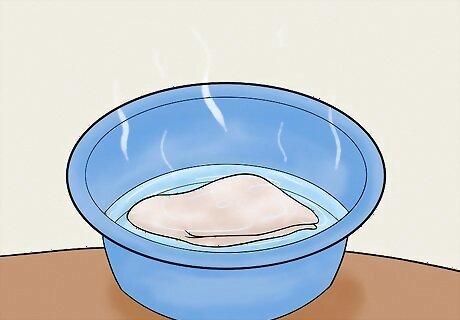
Soak a towel in warm water. Gently place this on your face and let it sit for one to two minutes. This will open your pores and prepare the skin on your face for exfoliation. Exfoliation is one of the most effective means to get rid of dead skin. Be careful that you use a warm and not scalding hot towel.

Wash your face with a gentle cleanser. After using the warm towel, the next step is to wash your face using a mild cleanser (such as Cetaphil) — the same as the one you likely already use on a daily basis as part of good skin care. Cleaning your skin can further help to open the pores and better prepare the skin on your face for effective exfoliation. After washing, gently pat your skin with a dry towel. Be gentle and do not rub too vigorously, to avoid causing any damage to your skin. You may try standing in front of a fan to dry your body, especially hard to reach areas.
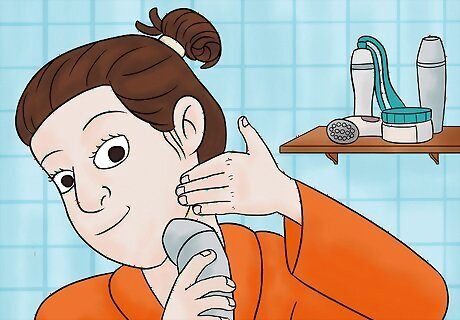
Try physical exfoliation. There are two types of exfoliation: physical, and chemical. Physical exfoliation is when you physically use a product that scrapes away dead skin cells by the pressure exerted upon them. Examples of tools for physical exfoliation include exfoliating pads and microdermabrasion kits. Skin-care professionals do not recommend microdermabrasion without the consultation of a doctor or dermatologist first, as you could damage or irritate your skin. These generally consist of an abrasive cream or scrub with a special tool for application.

Try chemical exfoliation. There is a variety of chemical exfoliating products available. Your best bet is to consult a professional in aesthetics or a dermatologist for advice in choosing the right product for you. According to dermatologist Mohiba Tareen, you can also get a chemical peel done by a dermatologist. If you are unable to afford a professional consultation, carefully read the labels of the products and choose one that is suited to your skin type. After washing your face and gently drying it, carefully apply the chemical exfoliating product. Spread it all over your face, being sure to cover the full surface area. Gently massage the chemical exfoliating agent into your skin. Try delicate circular motions with your fingers. Do not rub too hard, as you do not want to damage your skin inadvertently. Many people exfoliate their neck as well. Some examples of chemical exfoliating agents include a glycolic acid peel or a lactic acid peel. The acidic nature of these peels is part of what makes them so effective. Chemical exfoliation tends to work better than physical exfoliation (in particular for long-term results) because it is able to access deeper layers of the skin. Chemical exfoliation works by breaking chemical bonds, which in turn releases dead skin cells and allows them to shed much more easily. Tareen advises against over-exfoliating, since it can cause irritation and skin problems.
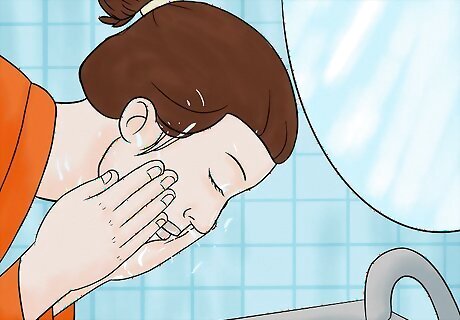
Wash your face with water after you are done exfoliating. Then gently pat it dry. Leave it for about five minutes to air dry and then finish by applying a moisturizing lotion. Moisturizing lotions are recommended as part of general skin care. They help to prevent early signs of aging and give your skin an overall healthy glow.

Understand that you can also exfoliate other areas of your body. Basically, all areas of your body are okay to follow this same process of exfoliation (other than sensitive areas and mucous membranes); however, the most common area people use it for is the face and/or the neck. This is because these areas are most visible to the public, and often the highest cosmetic concern for people. Look for exfoliating body scrubs that are made to work on the rest of your body and not your face.
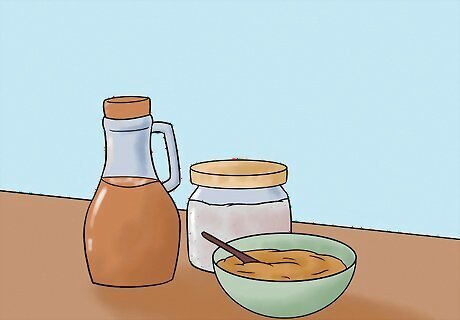
Try an all-natural solution using home ingredients. Not all exfoliating solutions are products bought in a store. In fact, it's easy to make your own exfoliating creams, peels, and rubs at home, if you prefer a more natural approach. Below are two easy-to-use recipes: Sugar and Oil Scrub: Combine equal parts brown sugar and any cooking oil (like olive oil, grapeseed oil, etc.) for a highly economical, highly effective skin scrub. Rub into the skin to exfoliate, then rinse with soap and water. Add a tablespoon of honey for extra nutrients if you’d like. Greek Yogurt and Papaya Enzyme Face Conditioning Mask: Mix 1/2 cup of Greek Yogurt and three tablespoons of mashed up papaya. Apply to face or body, and leave for 15 to 30 minutes. Peel off and rinse face when done.
Freshening Your Feet
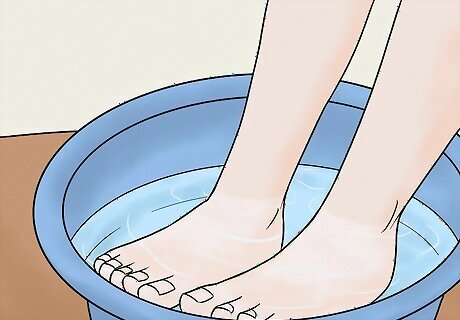
Begin by soaking your feet. Get a bowl of warm to hot water and place both of your feet in it. Let them soak for five to 10 minutes before exfoliating. This will loosen calluses or corns and prepare your skin for the best results. You can add some extra virgin olive oil to the water to increase the softening of your calluses. After soaking them, pat your feet dry with a towel.
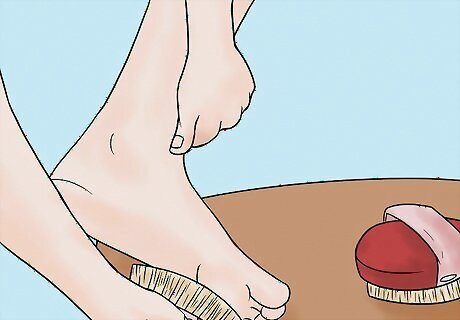
Try a physical exfoliation brush. Take a brush (you can buy a physical exfoliation brush at a cosmetics store) and rub it in gentle circular motions along the bottom of your foot. Focus particularly on the heel, and on other areas of hard or dead skin; this is an effective way to get rid of loose and/or dead skin. Alternatives to using a brush include a foot file, or the Ped-Egg product that has been marketed as an effective means of physically exfoliating your feet. You can also try an exfoliation cream designed specifically for your feet.
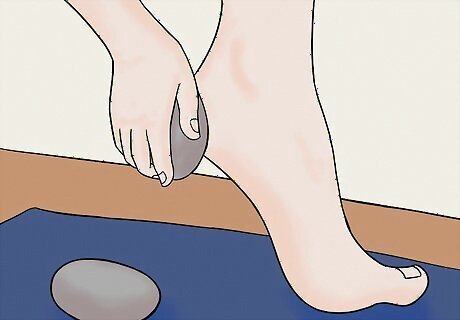
Use a pumice stone. If there are dead areas of skin of particular toughness, such as calluses, a pumice stone is an efficient way to shave them down and get rid of the dead skin. Be sure to wash the pumice stone after use and to let it air dry before your next use.
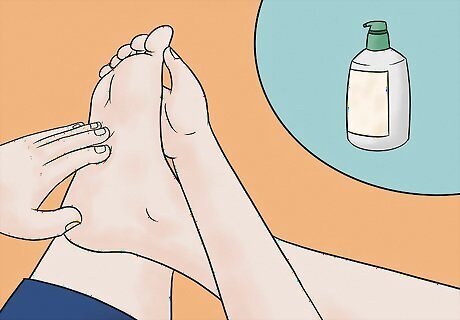
Finish by moisturizing the skin on the bottom of your feet. After exfoliating, using a moisturizing agent can help to ensure optimum protection for the new skin and will keep it healthier for longer. Put socks over the moisturizing agent to not slip while walking.
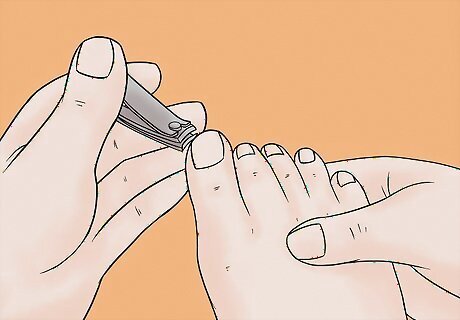
Get a pedicure. If you do not want to do this yourself, you can always get a pedicure. During the pedicure they will soak your feet and trim your nails. Some only use a microdermabrasion to work on the hard spots while other will use a razor blade to shave off dead skin. They can also work on any calluses you have on your feet.
Preventing Dead Skin
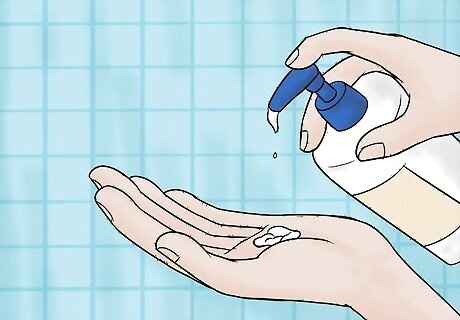
Use moisturizer liberally. Usually, your skin secretes natural oils to keep it soft, healthy, and moisturized; however, if something removes these oils or interferes with their production, your skin can get dry, flaky, and cracked. To soothe your skin once it dries out, apply a moisturizing lotion, cream, or balm often. These moisturizing solutions work by holding moisture close to the skin with a layer of oil or fat. Consider make lotion application part of your daily routine — for instance, you might try keeping a bottle of hand lotion at each of your kitchen and bathroom sinks so you can apply after each wash.
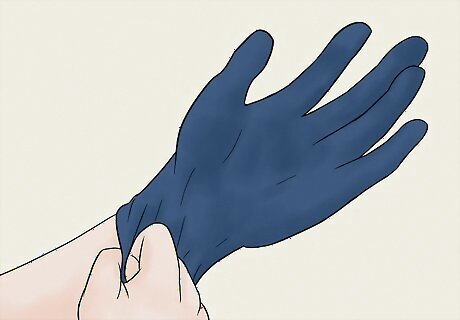
Cover up in cold weather. In many parts of the world, winter means cold, dry air outside and hot, dry air (from a heating system) inside. Together, these conditions can be very tough on your skin, causing dryness, cracking, and irritation. One of the best ways to keep your skin safe in the winter is to keep it covered up with long sleeves and other skin- covering accessories. The less of your skin that's exposed to the dry, biting air, the less you'll have to deal with its dehydrating effects.

Avoid overuse of harsh abrasives. Stronger abrasives (like pumice stones and stiff brushes) can sometimes be great for eliminating tough, built-up dead skin deposits; however, if used too often (or if used on sensitive skin), these abrasives can leave the skin red and raw, making it vulnerable to dryness and irritation in the long run. If you're noticing pain or redness after exfoliating, dermatologist Mohiba Tareen advises "taking a week off from your exfoliating daily routine." For instance, if your stiff-bristled shower brush has been irritating your skin, try switching to a gentle washcloth, which should allow you to exfoliate at a much more manageable pace.

Avoid long, hot showers. Hot water, though relaxing, strips away essential oils from your skin and leaves it vulnerable to drying out. To avoid this, simply keep your water temperature warm, not hot, and limit your showers to a reasonable length — about 10 minutes or less. The cooler (and shorter) your shower, the less likely you are to dry out your skin. The same principle applies to baths — shorter and cooler is best. You'll also want to avoid bubble baths and other soap-based soaks (except those known to be "moisturizing"), as these can also strip your skin's natural oils. Pat (rather than scrub) yourself dry after bathing. The back-and-forth action of a towel can remove natural oils loosened by the warm water and irritate delicate skin.
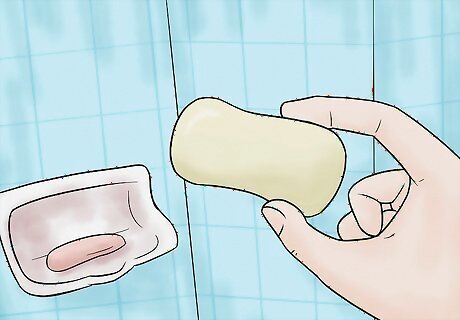
Consider switching your soap. Some soaps and cleaning products contain chemicals that can dry out sensitive skin and remove its natural protective oils. Alcohol-based soaps are especially bad, since they can seriously dehydrate the skin. Instead of washing your whole body with soap every single time you shower, dermatologist Mohiba Tareen suggests washing dirty areas like your armpits, your groin, under your breasts, and between your toes if you'll be showering again later in the day.

Try a gentle steam bath. For some, spending a few minutes in a steam room or sauna can help soften dry skin, unclog pores, and, most importantly, just feels great. If you have access to a professional-quality steam room, consider spending a few minutes to a half hour or so in the steam room occasionally as part of your weekly routine. Stay safe when using a steam room or sauna — never stay in longer than is comfortable, never raise the heat so high that it's hard for you to breathe or stay awake, and, most importantly, never combine sauna time and alcohol use.



















Comments
0 comment